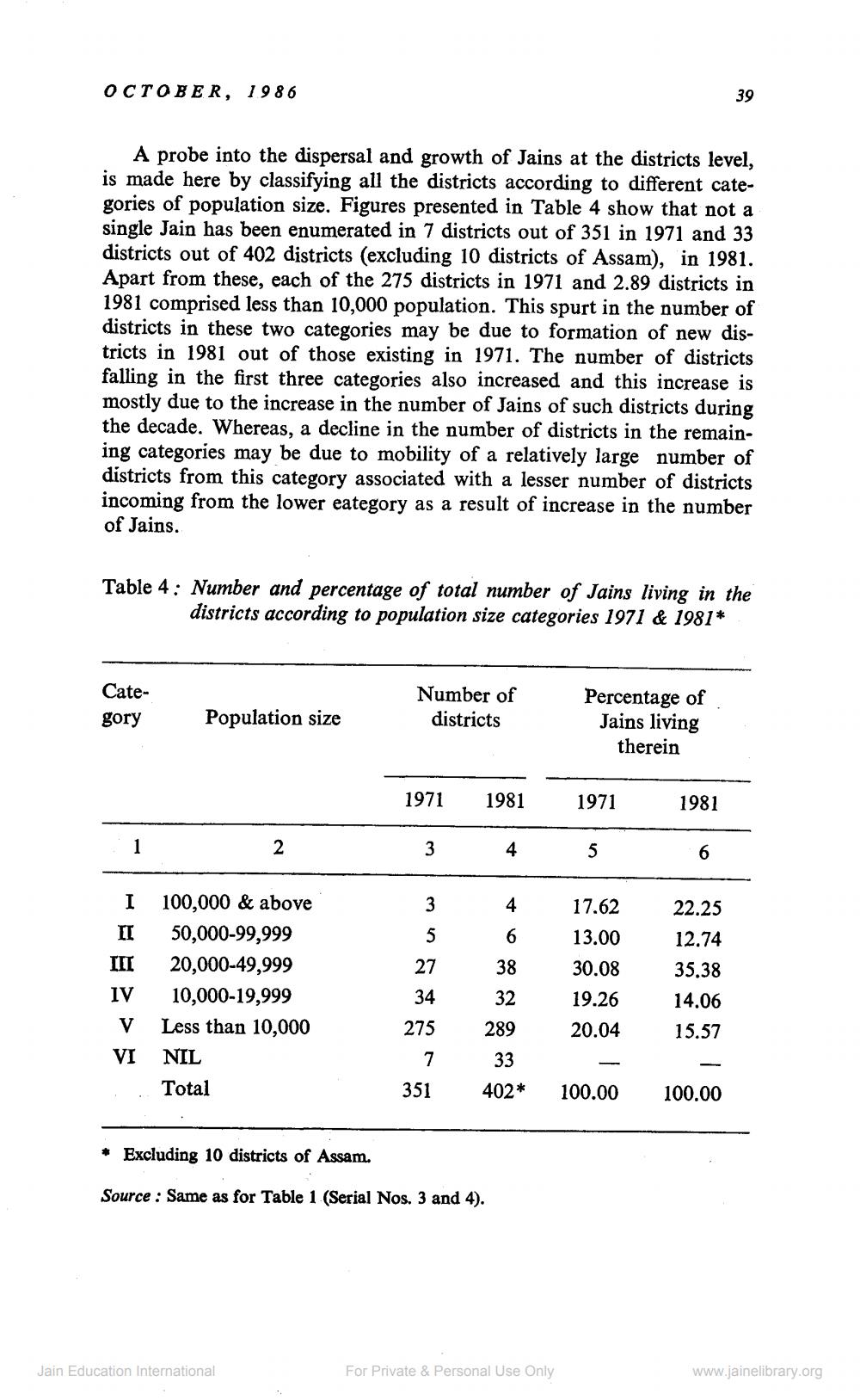Book Title: Jain Journal 1986 10 Author(s): Jain Bhawan Publication Publisher: Jain Bhawan Publication View full book textPage 9
________________ OCTOBER, 1986 A probe into the dispersal and growth of Jains at the districts level, is made here by classifying all the districts according to different categories of population size. Figures presented in Table 4 show that not a single Jain has been enumerated in 7 districts out of 351 in 1971 and 33 districts out of 402 districts (excluding 10 districts of Assam), in 1981. Apart from these, each of the 275 districts in 1971 and 2.89 districts in 1981 comprised less than 10,000 population. This spurt in the number of districts in these two categories may be due to formation of new districts in 1981 out of those existing in 1971. The number of districts falling in the first three categories also increased and this increase is mostly due to the increase in the number of Jains of such districts during the decade. Whereas, a decline in the number of districts in the remaining categories may be due to mobility of a relatively large number of districts from this category associated with a lesser number of districts incoming from the lower eategory as a result of increase in the number of Jains. Table 4: Number and percentage of total number of Jains living in the districts according to population size categories 1971 & 1981* Category Number of districts Population size Percentage of Jains living therein 1971 1981 1971 1981 3 4 5 6 3 4 6 38 I 100,000 & above II 50,000-99,999 III 20,000-49,999 IV 10,000-19,999 V Less than 10,000 VI NIL 17.62 13.00 30.08 19.26 20.04 22.25 12.74 35.38 14.06 15.57 32 289 33 402* Total 351 100.00 100.00 • Excluding 10 districts of Assam. Source : Same as for Table 1 (Serial Nos. 3 and 4). Jain Education International For Private & Personal Use Only www.jainelibrary.orgPage Navigation
1 ... 7 8 9 10 11 12 13 14 15 16 17 18 19 20 21 22 23 24 25 26 27 28 29 30 31 32 33 34 35 36 37 38 39 40
